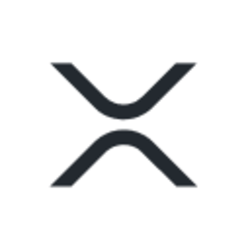-
The XRP Ledger’s new EVM-compatible sidechain has rapidly gained traction, recording 1,400 smart contract deployments within its first week of mainnet operation.
-
This innovative sidechain bridges Ethereum dApps with XRPL’s high-speed, low-cost infrastructure, enhancing interoperability and developer flexibility.
-
According to COINOTAG, validator participation and integration with cross-chain protocols underscore increasing institutional confidence in XRPL’s expanding DeFi ecosystem.
XRP Ledger’s EVM sidechain launches with 1,400 smart contracts deployed in a week, highlighting XRPL’s growing role in scalable, interoperable blockchain development.
Surge in Developer Adoption Highlights XRPL’s Smart Contract Potential
The launch of the XRP Ledger’s EVM-compatible sidechain on June 30 has catalyzed significant developer engagement, with nearly 1,400 smart contracts deployed within just seven days. This rapid adoption reflects the strong demand for a blockchain platform that combines Ethereum’s Solidity compatibility with XRPL’s hallmark features of low transaction fees and fast confirmation times. Developers benefit from the ability to seamlessly port existing Ethereum dApps using familiar tools like MetaMask and Hardhat, while leveraging XRPL’s 3.4-second block times and capacity for up to 1,000 transactions per second.
Cross-Chain Integration Expands XRPL’s Ecosystem
The sidechain’s compatibility with Ethereum’s Virtual Machine not only facilitates easy migration of dApps but also enables the creation of cross-chain applications that harness the strengths of both ecosystems. This interoperability paves the way for innovative use cases in tokenization, decentralized lending, and on-chain payments. The recent upgrade to Ripple protocol version 2.5.0 further enhances the network’s capabilities, positioning XRPL as a versatile platform for next-generation decentralized finance solutions.
Validator Network Growth and Institutional Interest Signal XRPL’s Maturation
At launch, the EVM sidechain was supported by a robust network of 25 independent validators, indicating strong institutional backing. This validator participation is a critical factor in ensuring network security and decentralization. Moreover, XRPL’s integration with multi-chain messaging protocols such as Wormhole and collaboration with Axelar Network—processing over $100 million in daily cross-chain transactions—demonstrate a strategic focus on expanding interoperability and DeFi functionality across blockchain ecosystems.
Strategic Positioning for Web3 and DeFi Expansion
Ripple’s introduction of the EVM sidechain marks a deliberate move to broaden XRPL’s utility beyond traditional payment solutions. By enabling smart contract execution and fostering cross-chain connectivity, XRPL is evolving into a comprehensive blockchain infrastructure tailored for Web3 applications. This development aligns with growing market demand for scalable, interoperable platforms capable of supporting complex decentralized applications and institutional-grade DeFi services.
Conclusion
The XRP Ledger’s EVM-compatible sidechain launch represents a pivotal advancement in blockchain interoperability and developer engagement. With rapid smart contract deployment, strong validator support, and strategic cross-chain integrations, XRPL is well-positioned to become a key player in the evolving decentralized finance landscape. Stakeholders should monitor ongoing developments as XRPL continues to enhance its infrastructure and expand its ecosystem capabilities.
